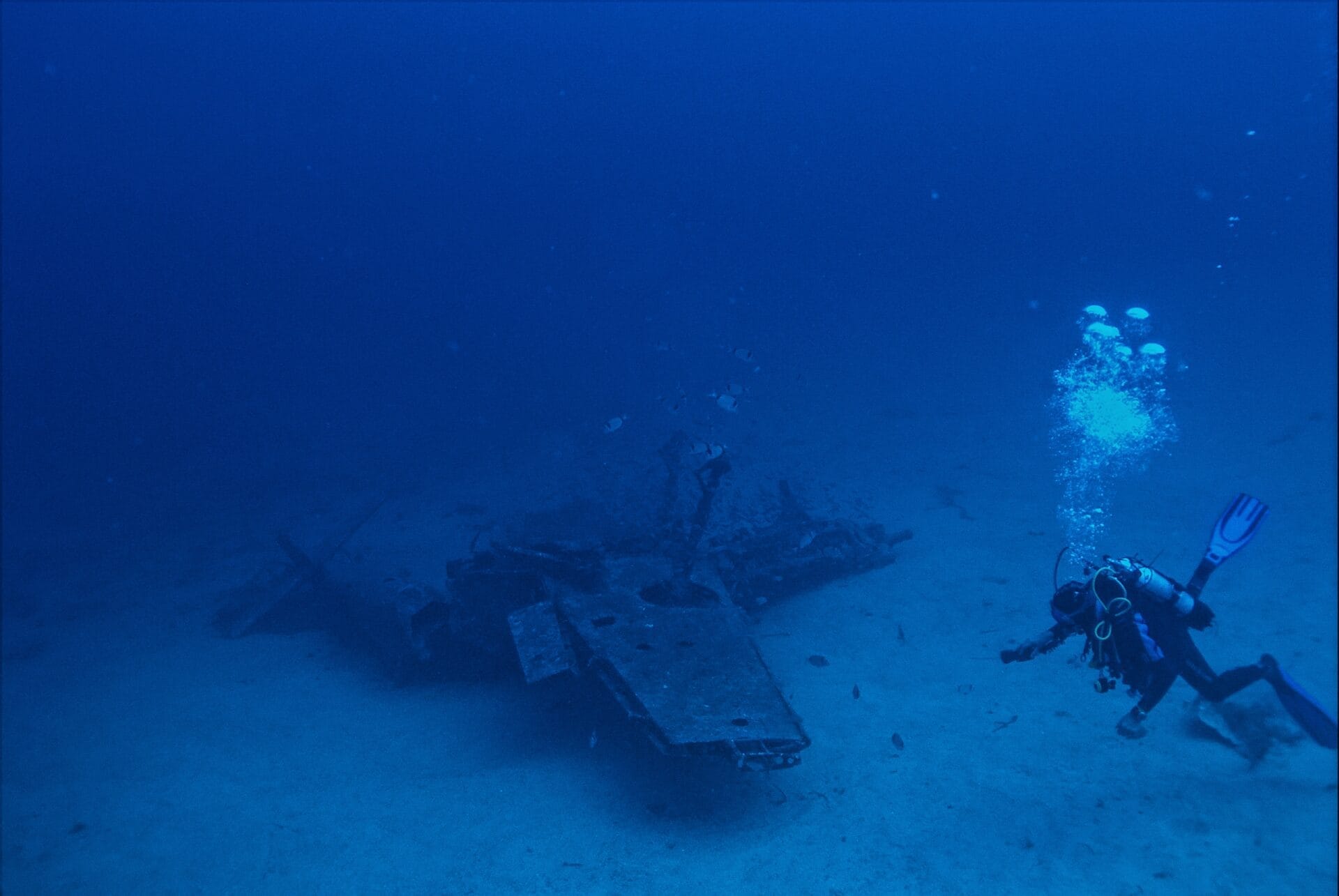A pressure tank is an important component of a well water system. It stores water and helps maintain the pressure in the system, which allows for a consistent flow of water throughout the home. However, if there is a problem with the pressure tank, it can cause air to get into the water lines, leading to reduced water flow and other issues. In this article, we will discuss how a bad pressure tank can cause air in water lines and what you can do to fix it.Pressure tanks are vessels that hold water and air under pressure. They are used in many different applications, such as residential water systems, industry, and agriculture. Pressure tanks help maintain a consistent pressure in the system by storing a volume of fluid when there is a higher demand for water than what is available from the supply source. This helps reduce the strain on the pump and also helps prevent system damage due to over-pressurization.
What Causes Air In Water Lines?
Air in water lines is caused by a variety of factors, including poor maintenance, incorrect installation or design, and corrosion. Poor maintenance can lead to air bubbles getting trapped in the pipes, which can cause pressure drops and turbulence. Incorrect installation or design can lead to a situation where air pockets become trapped in the pipes due to poor connections or fittings. Corrosion can also cause air pockets to form in the pipes due to degradation of the pipe material. In addition, incorrect pipe sizing or too much pressure in the system can also cause air to become trapped in the lines.
It is important to properly maintain water lines and ensure correct installation and design in order to prevent air from getting trapped in the pipes. Regular maintenance should be performed on all water systems to check for any potential problems that could cause air pockets to form. Corrosion should also be monitored closely as it can easily lead to air pockets forming in water lines. Finally, it is important to check that proper pipe sizing and pressure levels are being used when installing a new system or replacing old piping materials.
A Bad Pressure Tank: A Possible Cause of Air in Water Lines?
A bad pressure tank can be a possible cause of air in water lines. If there is an issue with the pressure tank, such as it being worn out or broken, then this can cause air to be present in the water lines. This could be due to a lack of pressure in the tank, which would lead to an insufficient flow of water. If the pressure tank is not able to provide the correct amount of water then it can cause air pockets in the water lines.
Air pockets can cause a number of problems for plumbing systems, such as reduced water pressure and decreased flow rate. Additionally, air pockets can lead to higher levels of corrosion in pipes and fixtures due to a decrease in oxygen levels, leading to more frequent replacements and repairs.
In order to prevent these issues from occurring, it is important that any bad pressure tanks are replaced as soon as they are identified. This will help ensure that there is an adequate supply of water and that any potential issues are resolved quickly and efficiently. Additionally, regular maintenance should also be undertaken on pressure tanks in order to ensure they remain in good condition over time and that any signs of wear or damage are addressed promptly.
Ultimately, a bad pressure tank can be a possible cause of air in water lines if it is not able to provide sufficient amounts of water or if it has become worn out or broken. In order to prevent this from happening it is important that any damaged or worn out tanks are replaced quickly and that regular maintenance is undertaken on them regularly.
How Can You Tell If Your Pressure Tank Is Bad?
If your pressure tank is not functioning properly, there are a few signs and symptoms that you should look for. One of the most common signs is a decrease in water pressure when water is running. If you notice that your water pressure has dropped significantly, it could be an indication that your pressure tank is not working correctly.
Another symptom of a bad pressure tank is a loud banging sound coming from the system when water is running. This type of noise indicates that the tank has lost its air cushion and needs to be replaced.
You should also check for any signs of corrosion or rust on the outside of the tank. Rust and corrosion can weaken the structure of the tank and lead to leaks or other problems. If you find any signs of corrosion, it’s best to replace the tank as soon as possible.
Finally, you should check for any visible cracks in the tank’s wall or lid. Cracks can cause significant damage to both the interior and exterior of the pressure tank, leading to decreased performance and potential leaks. If there are any cracks present, it’s best to replace the pressure tank immediately.
In conclusion, if you notice any decrease in water pressure, loud banging noises coming from your system, signs of corrosion or rust on the outside of your pressure tank, or visible cracks in its walls or lid, then it’s likely that your pressure tank has gone bad and needs to be replaced.
How Is A Bad Pressure Tank Connected To Air In Water Lines?
A bad pressure tank can be connected to air in water lines in several different ways. The most common way is to connect the tank directly to the water line through a check valve. This allows the tank to fill with water and pressurize the line, while preventing the water from flowing back into the tank. Another way is to use a pressure switch and a regulator valve. The switch turns off when the pressure drops and the regulator valve adjusts how much air is allowed into the line, maintaining an even pressure throughout. Both of these methods require proper installation and maintenance for optimal performance. Additionally, if not properly maintained, these methods may result in inadequate water pressure or other issues such as corrosion or leaks.

What Are The Symptoms Of A Bad Pressure Tank?
A pressure tank is an essential component of any water system, as it provides a reserve of water and maintains pressure throughout the plumbing system. However, a bad pressure tank can cause issues such as fluctuating water pressure, higher energy bills, and reduced water flow. Common symptoms of a bad pressure tank include noises like humming or buzzing when the pump turns on, water hammering sounds when pipes are turned on or off, and strange smells coming from the tank. Other signs of a failing pressure tank include excessive wear on the pump switch and irregular cycling of the pump. It’s also important to check for signs of rust or corrosion on the tank itself. If any of these issues are present, it’s important to have your pressure tank inspected by a qualified technician as soon as possible to prevent further damage to your plumbing system.
Diagnosing a Faulty Pressure Tank
Diagnosing a faulty pressure tank is not always straightforward, as there can be a number of possible causes. The most common cause of a faulty pressure tank is a faulty pressure switch, which can be tested using an ohmmeter. Other possible causes of a faulty pressure tank are inadequate water supply, incorrect size or capacity of the tank, or blockages in the pressure lines. In order to diagnose the fault correctly, it is important to understand how the system works and how the components interact with each other.
Checking the Pressure Switch
The first step in diagnosing a faulty pressure tank is to check the pressure switch. This can be done by using an ohmmeter to measure resistance across the contacts on the switch. If there is no continuity between the two contacts, then this indicates that the switch needs to be replaced. It is also important to check for any signs of corrosion or damage on the switch itself as this can also cause it to malfunction.
Repairing a Faulty Pressure Tank
Once you have identified that your pressure tank is faulty, it must be repaired in order to restore its full functioning capability. The type of repair required will depend on what has caused it to become faulty in the first place. If it is due to a faulty pressure switch, then this will need replacing with a new one. If it is caused by inadequate water supply or incorrect sizing or capacity of the tank then these issues need addressing before attempting any repairs. Blockages in the water lines should also be cleared before attempting any repairs as these can lead to more problems down the line if left unchecked. Once all necessary repairs have been made then you should test your system again and ensure that everything is functioning correctly before returning it back into service.
Potential Problems With A Bad Pressure Tank
A pressure tank is used to store water in a system and maintain the pressure within it. However, when the pressure tank is not functioning correctly, it can cause a number of problems. The most common issues associated with a bad pressure tank include water hammer, reduced water pressure, air locks in the system, and waterlogging.
Water hammer occurs when there is too much pressure in the system which causes the pipe to vibrate and make loud banging noises. This can be caused by a bad pressure tank that isn’t able to regulate the water pressure properly. Reduced water pressure can also occur when there is too much or too little water in the tank, causing the pump to work harder than usual to push out enough water for use.
Air locks are also a common issue with bad pressure tanks as they can cause air bubbles to form in the pipes which reduce flow and cause clogs. Finally, if there is too much water in the tank then it can become waterlogged which reduces its efficiency and capacity.
These issues with a bad pressure tank can lead to more serious problems such as leaks or damage to pipes and fixtures if left unchecked. To prevent these issues from occurring it is important to regularly inspect your pressure tank and make sure that it is functioning correctly. If any of these potential problems are noticed then it should be addressed as soon as possible by an experienced professional.

Conclusion
A bad pressure tank can cause air in water lines, resulting in a decrease in water pressure and an increase in noise from the pipes. If a homeowner notices any of these symptoms, they should investigate the problem further to determine if the pressure tank needs to be replaced. The homeowner may be able to fix the issue by replacing the pressure tank themselves, or they may need the assistance of a professional plumber. Either way, fixing the problem quickly is important for maintaining good water pressure and a quiet plumbing system.
In conclusion, a bad pressure tank is often at fault when there is air in water lines. Homeowners should seek out professional help if they are unsure how to replace or repair their pressure tank. Doing so will ensure that their plumbing system is running as it should, and that their family has access to clean and safe drinking water.

